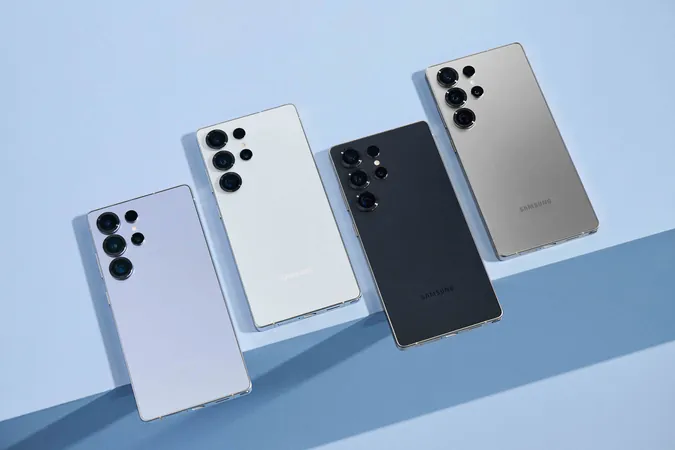
Continuous Glucose Monitors Outperform A1c in Foreseeing Severe Diabetes Complications!
2025-01-15
Author: Wei
Introduction
Recent research from the University of Virginia Center for Diabetes Technology has unveiled a groundbreaking finding: data from continuous glucose monitors (CGMs) can effectively predict complications such as nerve, eye, and kidney damage linked to type 1 diabetes. This breakthrough suggests that healthcare professionals may soon rely on CGM data to protect patients from debilitating conditions like blindness and diabetic neuropathy.
Key Findings
The study pinpointed that how long patients maintain their blood sugar levels within a safe range—between 70 and 180 mg/DL—over 14 days provides insights just as reliable as the traditional hemoglobin A1c (A1c) blood test, which has long been recognized as the gold standard in diabetes management.
Expert Insights
Dr. Boris Kovatchev, the director of the UVA Center for Diabetes Technology, emphasized the evolution of diabetes monitoring, stating, "The landmark Diabetes Control and Complications Trial (DCCT) established A1c as the metric for assessing risks associated with type 1 diabetes complications. However, the use of CGMs is on the rise, and we lack comprehensive studies validating CGM metrics as a primary measure of diabetes control."
Despite the increasing prevalence of CGM usage, the healthcare community has yet to universally accept CGMs as a primary outcome measurement in diabetes medication studies, pointing to a significant gap in long-term data which this research aims to fill.
Revolutionizing Diabetes Management
In a comprehensive analysis, researchers utilized machine learning to recreate virtual CGM data from participants of the aforementioned DCCT trial, originally published in 1993, which collected A1c readings regularly alongside blood-sugar profiles. Their findings revealed that substantial durations spent in the recommended safe blood-sugar range were predictive of complications like neuropathy and retinopathy.
Beyond merely monitoring average blood sugar levels, the study evaluated various thresholds—recording time spent within a stricter range (70 to 140 mg/DL) and time spent above critical levels (140 mg/DL, 180 mg/DL, and even 250 mg/DL). This holistic approach not only enriches the dataset but also provides a more nuanced understanding of how fluctuating blood sugar affects overall health.
With CGMs now being utilized widely among diabetes patients, these revelations could transform diabetes management strategies. They offer a promising pathway for researchers to advance diabetes care further, moving towards more individualized monitoring and treatment plans.
Conclusion
Dr. Kovatchev noted the immense resources required for any large-scale CGM studies comparable to the DCCT but expressed optimism about utilizing advanced data science methods to infer valuable insights from existing data. “Virtualizing a clinical trial allows us to bridge the gap of outdated information with contemporary analytical techniques,” he shared. As this research paves the way for enhanced diabetes care, it underscores an exciting era where technology and medicine intersect to improve patient outcomes dramatically. In a world where diabetes continues to be an escalating global health crisis, these advancements could be key in reshaping health trajectories and saving lives—one glucose reading at a time.



 Brasil (PT)
Brasil (PT)
 Canada (EN)
Canada (EN)
 Chile (ES)
Chile (ES)
 Česko (CS)
Česko (CS)
 대한민국 (KO)
대한민국 (KO)
 España (ES)
España (ES)
 France (FR)
France (FR)
 Hong Kong (EN)
Hong Kong (EN)
 Italia (IT)
Italia (IT)
 日本 (JA)
日本 (JA)
 Magyarország (HU)
Magyarország (HU)
 Norge (NO)
Norge (NO)
 Polska (PL)
Polska (PL)
 Schweiz (DE)
Schweiz (DE)
 Singapore (EN)
Singapore (EN)
 Sverige (SV)
Sverige (SV)
 Suomi (FI)
Suomi (FI)
 Türkiye (TR)
Türkiye (TR)
 الإمارات العربية المتحدة (AR)
الإمارات العربية المتحدة (AR)